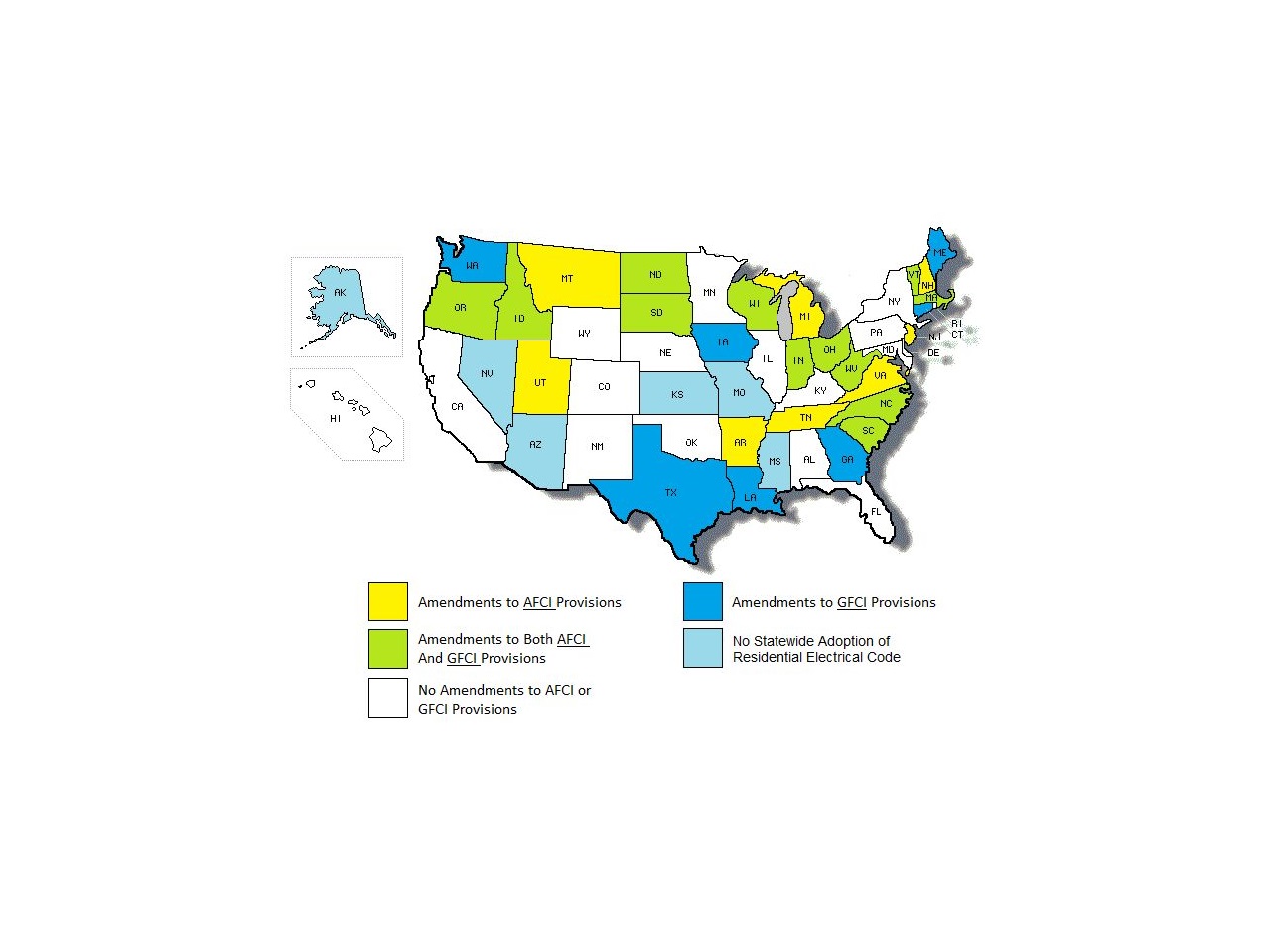Arc-Fault Circuit Interrupters (AFCIs)
Arc-fault circuit interrupters (AFCIs) have been on the market since about the year 2000. They differ from ground-fault circuit interrupters (GFCIs), which were introduced into the NEC in the 1960s. Where GFCIs are designed to protect people from shock if parts of an electric appliance or tool become energized due to a ground fault, AFCIs are designed to protect branch circuit wiring from arcing faults.
The electrical problems AFCIs are designed to prevent occur overwhelmingly in older dwellings built to outdated codes. Since the 1990s, numerous changes have been made in both the NEC and product safety standards which mitigate against similar fires in newer homes—even as they age. For that reason, NAHB and other housing affordability advocates see their inclusion as an unnecessary expense.
NFPA 70, National Electrical Code (NEC), first included AFCIs in the 1999 edition. Subsequent editions added locations which were required to be covered.
- 1999 NEC: Branch circuits serving dwelling unit bedrooms needed to be covered by AFCIs as of January 1, 2002.
- 2008 NEC: AFCI coverage expanded to family rooms, dining rooms, living rooms, parlors, libraries, dens, sunrooms, recreation rooms, closets, hallways and similar rooms or areas.
- 2014 NEC: Kitchens and laundry areas to the list of required areas.
The list has remained unchanged in the 2017 and 2020 editions of the NEC.
Local Success Stories
If the builders in your state or local jurisdiction have experienced success in fighting the spread of AFCI or GFCI mandates, please contact NAHB so we can share what you’ve learned with other builders across the country.
State Adoptions
Review State Adoptions of the National Electrical Code. This resource contains maps and a table which detail the status of AFCI and GFCI requirements in each state. Hyperlinks to state building code agencies as well as relevant documents are included.
Status of AFCI Amendments in Each State




